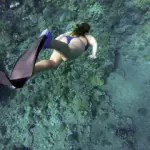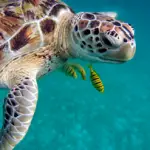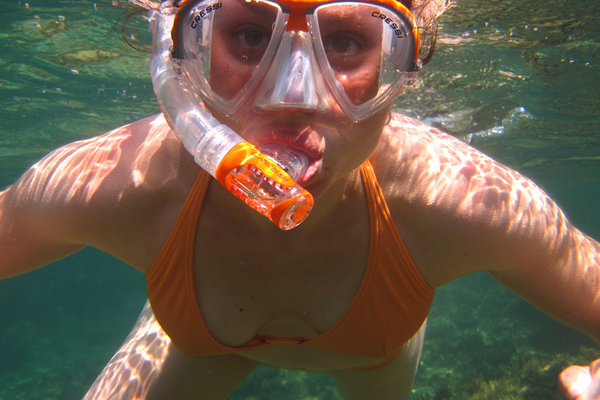
Top tips for snorkelling for your very first time
If you’ve not snorkelled before, you may not know how it all works nor how a snorkel keeps water out. You will need to know what to do as a beginner to stay safe. Plus it’s good to at least look like you know what you’re doing. Even if it’s your first time snorkelling. Let’s take a look…
Snorkelling for beginners: How the water is kept out? The water is kept out of a wet snorkel by keeping the tip of the snorkel out of the water. A semi-dry snorkel has a splash guard to help prevent water entering accidentally at the surface. A dry snorkel is designed with a float valve to prevent water from entering accidentally at the surface or when you dive down.
The best way to do more diving and snorkeling is to book yourself on a scuba diving liveaboard. You can check the latest and best deals on liveaboards using the following window:
What is a snorkel?
Firstly and before we take a look at how you keep the water out, let’s be clear what a snorkel is.
Snorkels that are separate to a mask are made up of two parts (i.e. not a snorkel-mask); These two parts include the snorkel tube and the mouth piece. Read about snorkel masks later in the article where the mask and snorkel are combined.
A snorkel is a device used for breathing air on the surface of the water. The wearer’s head is face-down in the water, whilst the top of the snorkel sticks out above the water. The mouthpiece of the snorkel is held in the snorkelers mouth.
You can also get a snorkel mask, where the snorkel is built-in to the mask itself. I will consider both types of snorkel in this article about how you keep the water out.
How does a snorkel keep water out?
There are a number of tips to keep the water out when you’re snorkeling. These techniques or tips are important to understand or learn as a beginner to snorkeling.
Ways to keep water out of a snorkel:
All snorkel types:
Keep your mouth closed tight around the mouth piece at all times. It’s your lips that should create a seal around the edge of your snorkel’s mouthpiece.
But also it is the gentle grip of your teeth on the mouth piece that keeps the snorkel in your mouth. Don’t bite too hard on the mouth piece or you’ll sever the rubber bite grips.
Wet Snorkels:
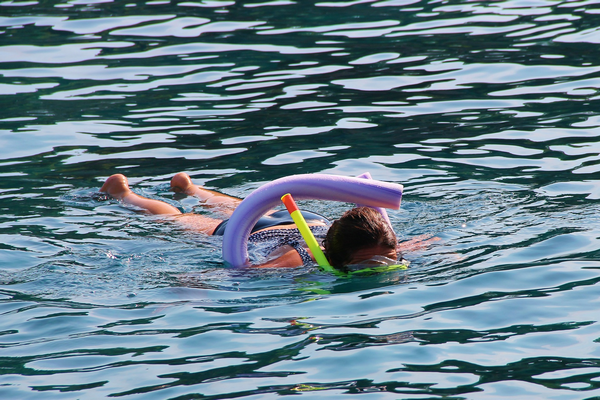
- Be aware of where the top of the snorkel is pointing when your head is in the water. If you point your head too far forward or too far back, the top of the snorkel can get submerged. If this happens the snorkel tube will fill with water. This is true of Wet Snorkels as a compared with Dry Snorkels (see below).
- Be aware if you’re snorkeling in choppy water with a Wet Snorkel too, as the waves may wash over the top of your snorkel and fill the tube. You may need to push the water out if this happens with a forced exhale of air down the snorkel tube.
- If you’re snorkelling with a wet snorkel and you dive down, the snorkel tube will fill with water. You will need to do a forced exhale to expel all the water from the snorkel tube when you return to the surface.

Dry Snorkels:
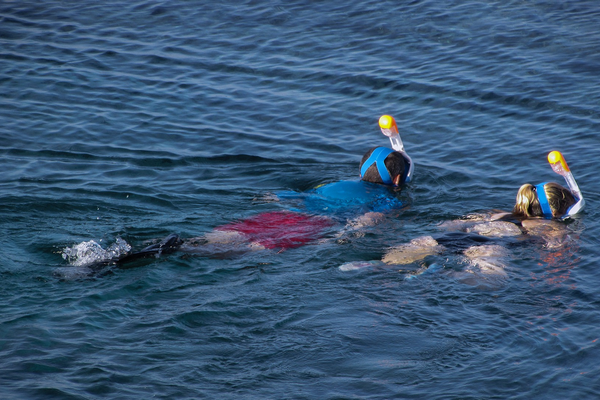
- If you have a Dry-Snorkel, the top of the snorkel will have a float valve that will close-off if submerged underwater. Snorkels with this float valve device can make it easier for beginners to snorkelling. The float valve prevents water from entering the top of the snorkel tube if it gets submerged accidentally.
- When you dive down with a dry snorkel, the float valve will close off automatically and will prevent water from entering the tube. Whereas as described above, with a wet snorkel the tube will fill with water.
Semi-dry snorkels:
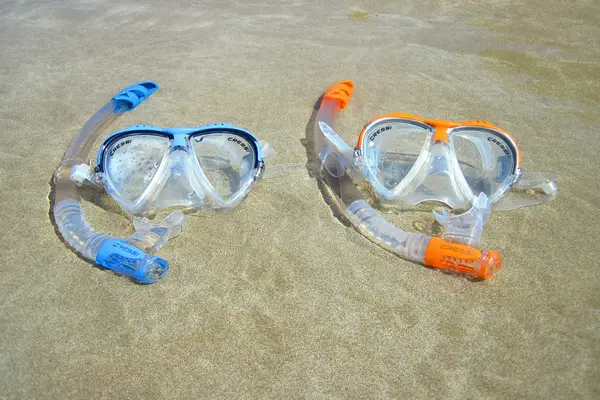
- There is a third type of snorkel, which is a Semi-Dry Snorkel. Semi-Dry Snorkels are designed to help keep water out using a splash guard.
- This splash-guard helps with choppy water scenarios and helps prevent water from entering the top of the tube accidentally.
- But beware when you snorkel using a semi-dry snorkel, if you tilt your head too far back or forward so that the tip is submerged, the tube will fill up in the same way as it does with a wet snorkel.
- Also, if you dive down using a semi-dry snorkel, the tube will also fill up. If this happens you’ll need to do a forced exhale at the surface to clear the water like you would with a wet snorkel. However, this expellation of water isn’t as easy to do with a semi-dry snorkel as it is with a wet snorkel.
Snorkel-Masks:
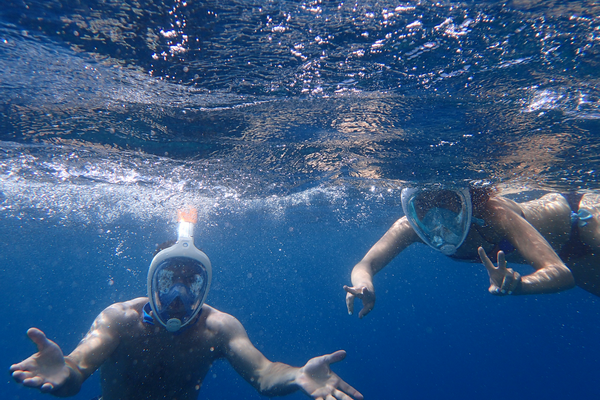
- If you are using a Snorkel Mask rather than a separate snorkel, you won’t have a problem of water entering the snorkel as most have a float valve system. Therefore snorkel masks tend to use the dry-snorkel system.
- It is also difficult to dive down using a snorkel mask so this isn’t a consideration either, as it is difficult to clear your ears as you dive down with this type of snorkel.
- With a snorkel mask, it is the seal around your face that keeps the water out on a snorkel mask, so make sure not to catch any hair in-between the mask seal and your face when you put it on.
How does a snorkel work underwater?
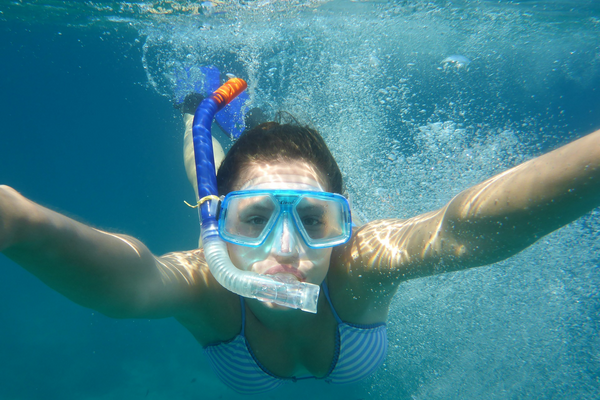
Snorkels are designed for you to breath at the surface and don’t work when you’re under the water.
However, you can dive down when you’re snorkeling, but to do so you will need to hold your breath. But if this is what you want to do when you go snorkeling, don’t buy a snorkel mask, as you won’t be able to dive down like you can using a separate snorkel and mask.
Can you breathe underwater with a wet, dry or semi-dry snorkel?
No matter what snorkel you have, be it a wet snorkel, a semi-dry snorkel or a dry snorkel, you can’t breath underwater once the top of the snorkel is completely submerged underwater.
There simply isn’t enough air in the snorkel to breath. Plus with a wet and semi-dry snorkel, if you attempt to breath underwater, water would be sucked in at the top of the snorkel and you’d end up chocking. Not a good thing to happen!
Whereas with a dry snorkel, the top of the snorkel is closed off so it won’t be possible to breath either.
How long can you stay underwater with a snorkel?
The length of time you can spend underwater when snorkeling will depend on how long you can hold your breath. The longer you can hold your breath, the longer your underwater stay will be. If you want to stay underwater for longer you need to practice holding your breath. The more you practice, the better you’ll get.
The average person can hold their breath for between 30 seconds and one minute. But with a bit of practice, you could easily extend this to two minutes or even more. The fitter you are, the better you will be at holding your breath too.
However, if you’d like to spend even longer underwater, then consider progressing to scuba diving.
I hope you enjoyed this article about how does a snorkel keep water out
I’d love to hear from you. Tell us about your adventures of diving and snorkelling. Please use the comments section below. Please also share your photos. Either from your underwater cameras or videos from your waterproof go-pro’s!
If this article hasn’t answered all of your questions. If you have more questions either about snorkelling or scuba diving (or specifically about how does a snorkel keep water out), please comment below with your questions.
There will also be many more articles about scuba and scuba diving safety tips (and on snorkelling too) for you to read and learn about this fabulous sport.
Have fun and be safe!

